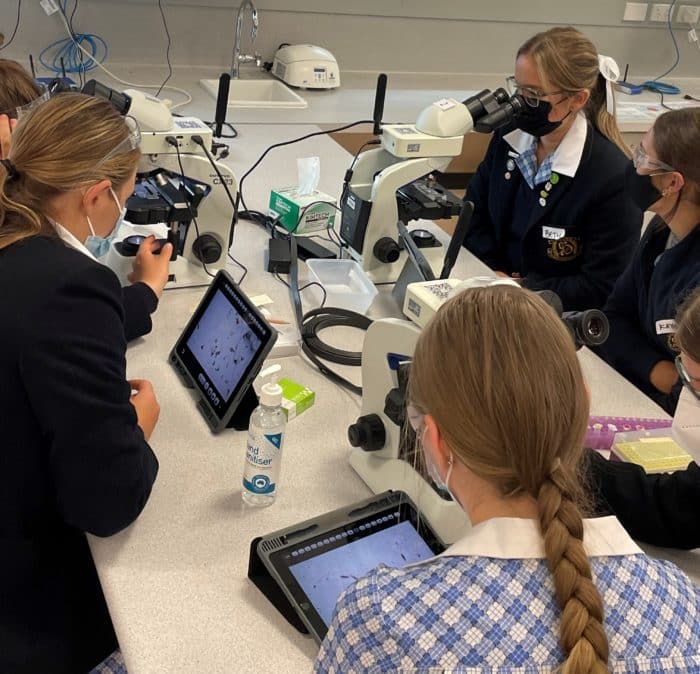In Education Today, Head of Science, Rebecca Kerr explores how teachers can engage more girls in STEM subjects and sustain their interest throughout their learning years.
A recent article in The Age highlights that despite girls outperforming boys in 16 of the 20 VCE subjects, boys continue to outperform girls in VCE subjects that are grounded in science and math. In fact, boys continue to dominate in the subjects of physics, accounting, and specialist mathematics.
This raises questions around how educators can engage more girls in STEM subjects and sustain their interest throughout their learning years, before then converting them into professions like engineering, accounting and science.
As a starting point, educators and parents must improve both the explicit and implicit messaging girls receive about science and math subjects. If we normalise language around these subjects being interesting, exciting and attainable to young women we will begin to close the gender gap in the take up of STEM subjects. If we de-gender professions in the STEM subjects – for example the pronouns we use when speaking about doctors and nurses – we will move closer to making STEM subjects feel more inclusive to women.
A curiosity for science and maths starts in early childhood through engagement in simple play. Young children naturally enjoy problem solving and exploring the world, so to increase girls’ interest and confidence in participating in science and mathematics educators should provide activities that fuel curiosity and challenge children to solve the task at hand by using basic principles. These activities can range from experimenting with how wind moves objects, how far a toy car can travel, how tall you can stack blocks.
As children advance at school, modelling passion and enthusiasm for the STEM subjects is of increasing importance, as is scaffolding students’ thinking to formulate and test hypotheses, look for patterns and draw conclusions. These strong initial skills alongside a developed curiosity will carry an interest in STEM into secondary education.
Secondary science teachers are then present in the formative decision-making years of both senior secondary subject choices and initial tertiary pathways. In terms of engagement, genuine linking of the curriculum to real life is ideal. Application beyond the classroom will enable students to efficiently problem solve, a skill that is beneficial to fostering interest in STEM careers and pathways available to students.
For example, finding fresh ways to share STEM subjects with students can prompt enthusiasm and interest by bringing alive professional tasks. An experience of human heart surgery or space exploration through virtual reality can serve as an introduction to subjects that would otherwise not be able to be experienced in a classroom setting.
Of equal importance is ongoing parental and school encouragement of girls choosing to study science. As science subjects become academically challenging, encouraging resilience and persistence in studying will help students through their STEM journey and maintain an interest in the subjects.
Lastly, provision of a strong careers program and making science pathways visible and accessible to girls is the role of schools, teachers, parents, tertiary institutes and industry.
In my experience, senior students are vocal that while they don’t want science subjects forced onto them just for the sake of having more girls studying STEM, they are open to knowing what pathways exist and having access to experiences in these subjects. Open discussions about careers, role modelling and showcasing routes to success through speaking events, industry visits and work experience can all be influential.
Past educational experiences will inform future decisions about whether girls will study science, just as looking to future careers will influence VCE subject and tertiary pathway choices. The more we work to bring STEM subjects and the women who work within them into everyday conversations, the more we are encouraging girls to successfully imagine themselves in these roles.
Rebecca Kerr, Head of Science


